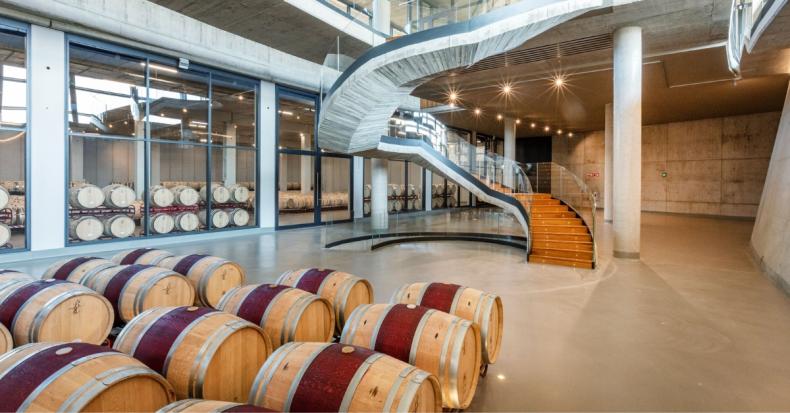The practice of ageing Rioja in oak came from Bordeaux via Manuel Quintano whose family made wine in the town of Labastida in La Rioja. He learnt that using oak barrels not only provided a convenient container for moving wine but also preserved it and improved it.
Oak has now been used in Rioja for hundreds of years. Historically only young wines were prized and there’s evidence that as soon as a new vintage was ready, that anything left from the previous year was thrown away to make room for it.
Today, it’s mainly American oak that’s used, a legacy of Spain’s 18th and 19th-century trade with Cuba and Mexico. Rioja producers who want to add even greater complexity to their wines will also use French oak barrels.
While oak casks are not a perfect seal, they won’t leak but will let a small amount of oxygen in which will soften the wine. They can also add wood tannins (polyphenols that are found in grape skins, bark, and seeds which taste dry on the palate) which can extend its life and can add a vanilla tone to wine, especially if the barrel is new.
Initially, Rioja’s winemakers used French oak - even though many French winemakers preferred Russian oak – this proved expensive and hard to use. French oak, for example, can’t be sawed but needs to be split else it will leak. Following significant price rises following the Russian Revolution, winemakers looked to the American colonies for suppliers. These they found gave the wines a lovely spicy, zesty character and American oak soon replaced French oak as the wood of choice.
The finest Riojas, such as those created by Beronia, use a combination of French and American oak which adds even more depth and concentration to the wine.
In Rioja, the use of oak is central to wine production and the Rioja classifications. Visit a Rioja bodega and you’ll likely see a number of 225-litre barrels – Bordeaux’s ‘barriques’ – these are required for ageing wines. Some of these will be new – new barrels add a stronger vanilla flavour and add wood tannins that help with ageing. Others will be older and these will have a more subtle impact on the wine. The mix of these old and new barrels will depend on things like the winemaker’s aim for the wine and the quality of the harvest – too much new oak can dominate weaker vintages.




